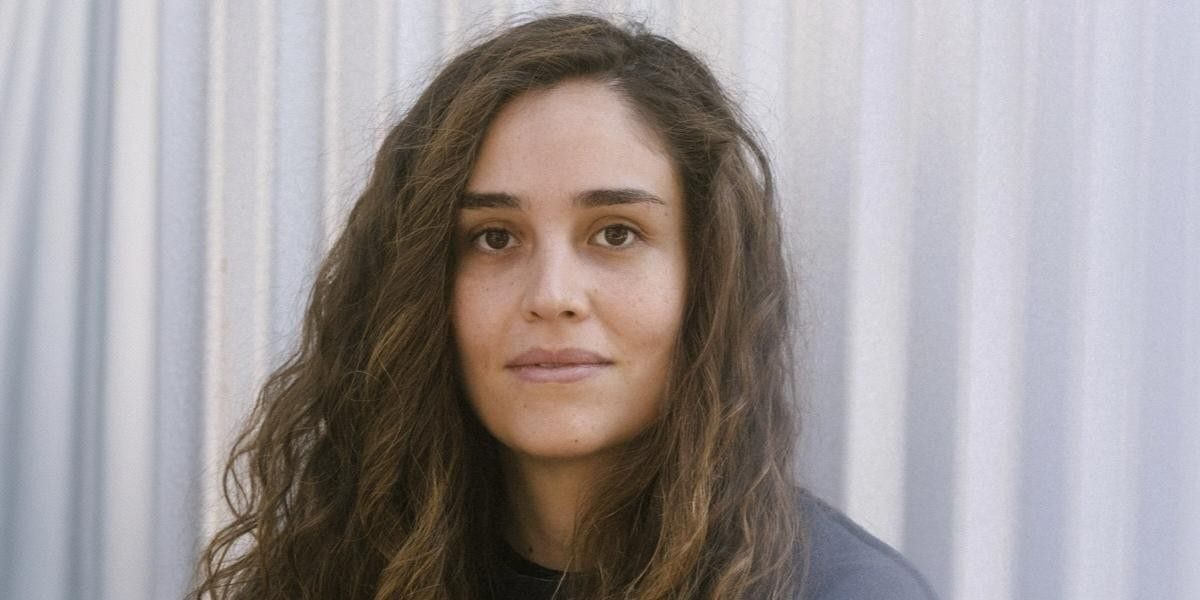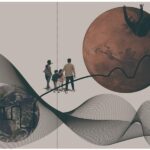By: Ethan Rogers
New York City’s tech scene is a crucible. For product designers, it’s a place of immense opportunity, but also intense competition. Leaping from a mid-level designer focused on execution to a senior designer who drives strategy is a challenging and rewarding step in a creative career. It requires more than just pixel-perfect mockups and a mastery of Figma; it demands a strategic mindset, business acumen, and a unique creative voice.
To understand what it takes to thrive at this level, I sat down with Sofia von Hauske, a Senior Product Digital Designer at Fishbowl, whose career path is as dynamic as the city she calls home. Originally from Mexico City, von Hauske’s journey has taken her from industrial design for global giants like Disney to crafting sophisticated digital experiences for a wide array of tech startups. Her work is a vibrant blend of the playful and the pragmatic, grounded in a skill set that spans both 2D and 3D design.
“I’ve always seen design as a form of play, a creative puzzle to solve,” von Hauske tells me, her passion evident. “I design for the kid version of myself.” This core philosophy, she explains, enables her to find innovative solutions, whether she’s designing a data-heavy dashboard or an AI-powered storybook app.
Here, Sofia von Hauske shares five essential tips for product designers looking to build a senior-level career in the fast-paced New York landscape.
1. Become an Industry Generalist
In a city with a dizzying array of industries, von Hauske argues that versatility is a senior designer’s superpower. “Don’t let yourself get siloed,” she advises. “The temptation is to become the ‘fintech expert’ or the ‘e-commerce guru,’ but the strongest senior designers are adaptable problem-solvers who can bring fresh eyes to any challenge.”
Her own portfolio is a testament to this principle. “Since moving into digital design, I’ve worked on a wide variety of projects: an app for golfers (Leaderboard), a social platform for contractors (Trade Hounds), and an AI-powered app that helps parents create personalized storybooks for their children,” she lists. “I’ve also collaborated with dentists, designed data-driven marketing software for the food industry (Fishbowl), and even worked briefly with a 3D knitting company.”
This breadth of experience, she says, is what keeps her creatively sharp. For aspiring seniors, the message is clear: actively seek projects outside your comfort zone. This could be through freelance work or by volunteering for new initiatives within your company. Demonstrating the ability to adapt to diverse user behaviors, business models, and technical constraints is a hallmark of senior-level talent.
2. Anchor Your Work in a Personal “Why”
Technical skills can be taught, but a unique perspective is what sets a leader apart. Von Hauske emphasizes the importance of understanding your own creative philosophy and weaving it into your work as a compelling narrative. For her, a foundational experience came from her time as an industrial designer.
“I think some of my most meaningful work was the Disney projects I worked on,” she reflects. “Those projects were defining for me because they made me realize what I truly love about design—it brings out the kid in me.”
This personal “why” directly influences her approach to digital products. A prime example is Luna’s Bedtime Stories, an app currently in development that uses AI to cast the child as the hero of their own illustrated story. “We wanted each child to feel an unbreakable bond with their story,” she explains. “By making the experience intensely personal and relatable, we aimed to forge an emotional connection.”
In a market saturated with talent, your story is your differentiator. A senior designer doesn’t just build what they’re told; they bring a vision. Articulating that vision—whether it’s a passion for accessibility, sustainability, or creating joy—is what attracts senior-level opportunities.
3. Speak the Language of Business and Data
The transition to a senior role is marked by a shift from focusing solely on the user to striking a balance between user needs and business objectives. According to von Hauske, fluency in the language of business and data is non-negotiable.
In her current role at Fishbowl, she designed a scalable system of analytics widgets to help restaurant businesses track customer behavior and campaign performance. “As the sole designer, I partnered directly with developers, the data engineering team, and business stakeholders,” she says. “The project aimed to give marketing and operations teams better visibility into guest engagement metrics.”
Her success hinged on her ability to understand the strategic goals and communicate her design decisions in terms of their impact on the business. “Throughout the process, I incorporated feedback from users, as well as strategic input from the CEO and board, ensuring the system met both operational and executive needs.” Aspiring seniors must learn to frame their work around key performance indicators (KPIs) and demonstrate how their design solutions drive tangible business results.
4. Cultivate a “3D” Skillset
While the “T-shaped” designer model (deep expertise in one area, broad knowledge in others) is a well-known standard, von Hauske suggests adding another dimension. Her own background in both 2D and 3D design (using tools from Figma to Blender and Solidworks) gives her a unique edge.
This hybrid skillset allows her to think more spatially, create compelling animations and illustrations, and engage with emerging technologies. While not every designer needs to become a 3D modeler, the principle is about cultivating a unique, complementary skill that sets you apart.
“It could be creative coding, copywriting, or even something more experimental,” she suggests, pointing to a course she took, ‘Interaction Design in The Wild,’ which explored designing interfaces from the perspective of animal sensory systems. “Learning radically different sensory experiences from animals helps us design novel interfaces for humans,” she notes. This kind of exploration pushes creative boundaries and demonstrates a forward-thinking curiosity that is highly valued in senior roles.
5. Lead with Empathy—For Your Team and Your Users
Ultimately, seniority is about leadership. In product design, leadership is built on a foundation of empathy—not just for the end-user, but for every member of the cross-functional team. A senior designer is a mentor, a collaborator, and a communicator.
“At the senior level, your job is to elevate the entire team,” von Hauske states. Her job description at Fishbowl explicitly includes mentoring junior designers and fostering a collaborative design environment. This involves providing constructive feedback, facilitating productive critiques, and translating complex design ideas into clear, actionable language for engineers, product managers, and stakeholders.
Her work on the Leaderboard Pro app, a comprehensive tool for golfers, illustrates this. “I carefully considered the needs of golfers to present information in a way that was both informative and easy to use,” she says. But equally critical was her ability to communicate the rationale behind every element to the development team, ensuring the vision was executed flawlessly. The ability to build consensus, inspire colleagues, and advocate for both the user and the team is the final, crucial step in becoming a true design leader in a demanding city like New York.
















